This post is also available in: ![]() Português
Português
Iran is the only country in the whole world which every single woman must, by law, cover herself (In Saudi Arabia is not compulsory for tourists). Perhaps, that was the reason which made Fernanda to hide every last remnant of her hair under the scarf as soon as the plane landed in Tehran. But how to dress in Iran, really?
But before reading about how to dress in Iran, have a look at this page of Iran with all the information you need before travelling to this beautiful country.
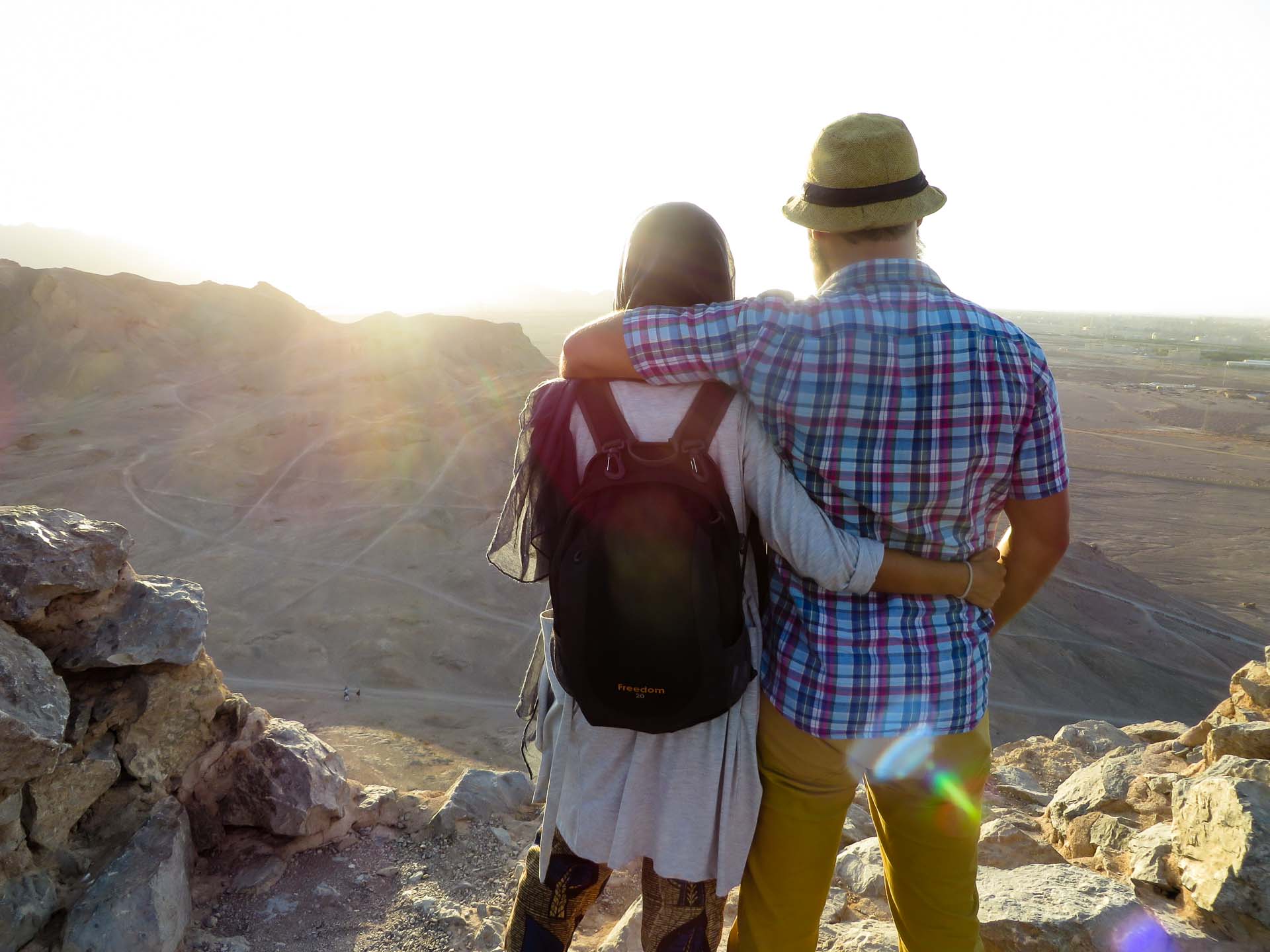
Going through the immigration was a bit tense for us. We knew beforehand that women should cover their arms, legs and hair, and men their legs. But, were we really following Iran’s dress code accordingly? What if they send us to prison already on our arrival at the airport?
We heard so much criticism from our families and friends for going to Iran that we started to question our decision to do so.
Two days later, we had already met a few locals and observed enough to notice that the dress code in Iran isn’t that rigorous. We mean, it is, but people don’t follow it by the book, better speaking.
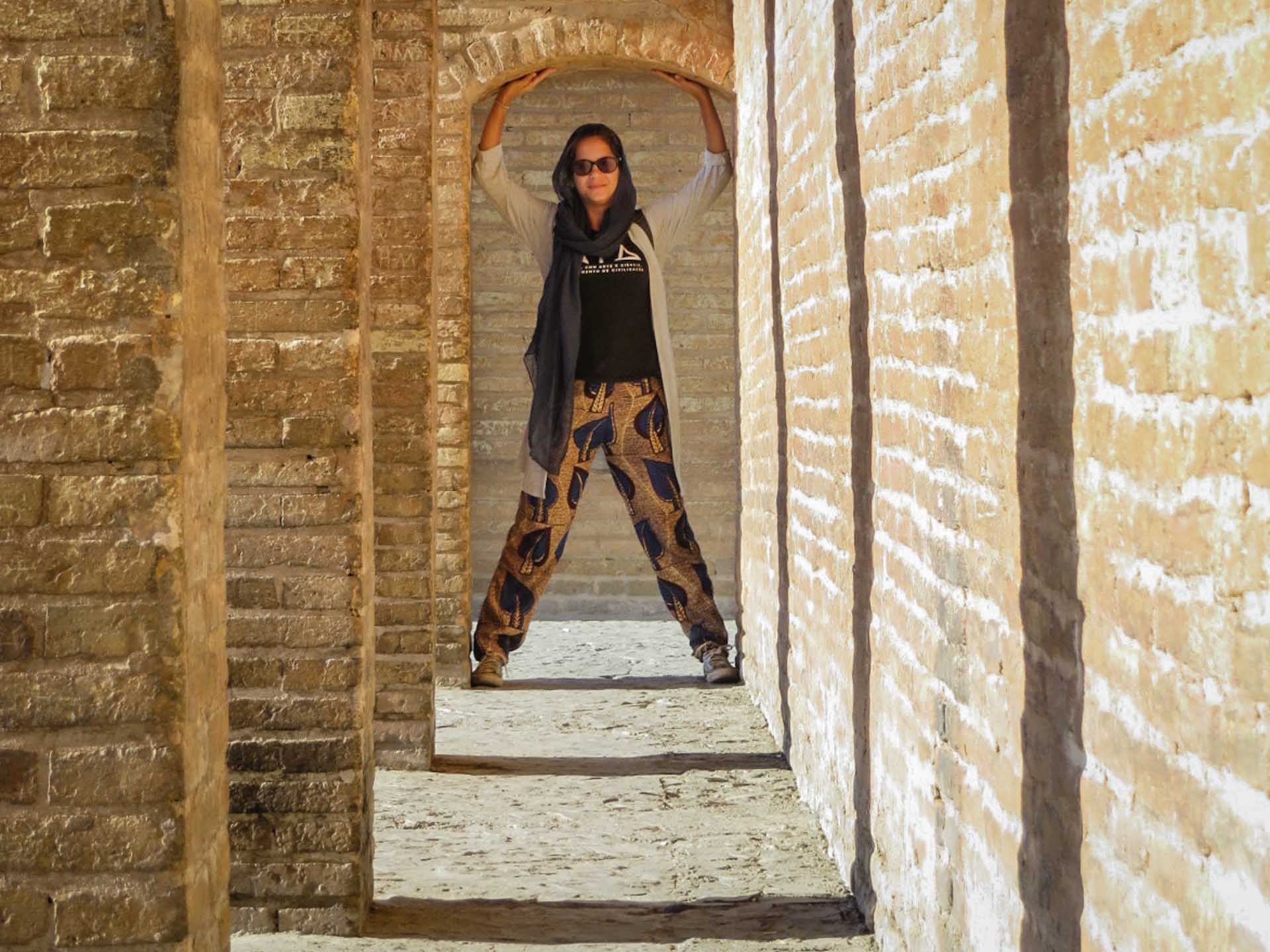
Yes, women must cover their hair, but most of them do not leave every single strand of hair underneath the scarf. In Tehran, mainly, the majority of youths don’t wear their hijab appropriately, leaving it hanging in their pony tails, half way through their head. Actually, our Iranian friends laughed at Fernanda because she was wearing her hijab so perfectly tidy at the beginning.
Women dress in Iran
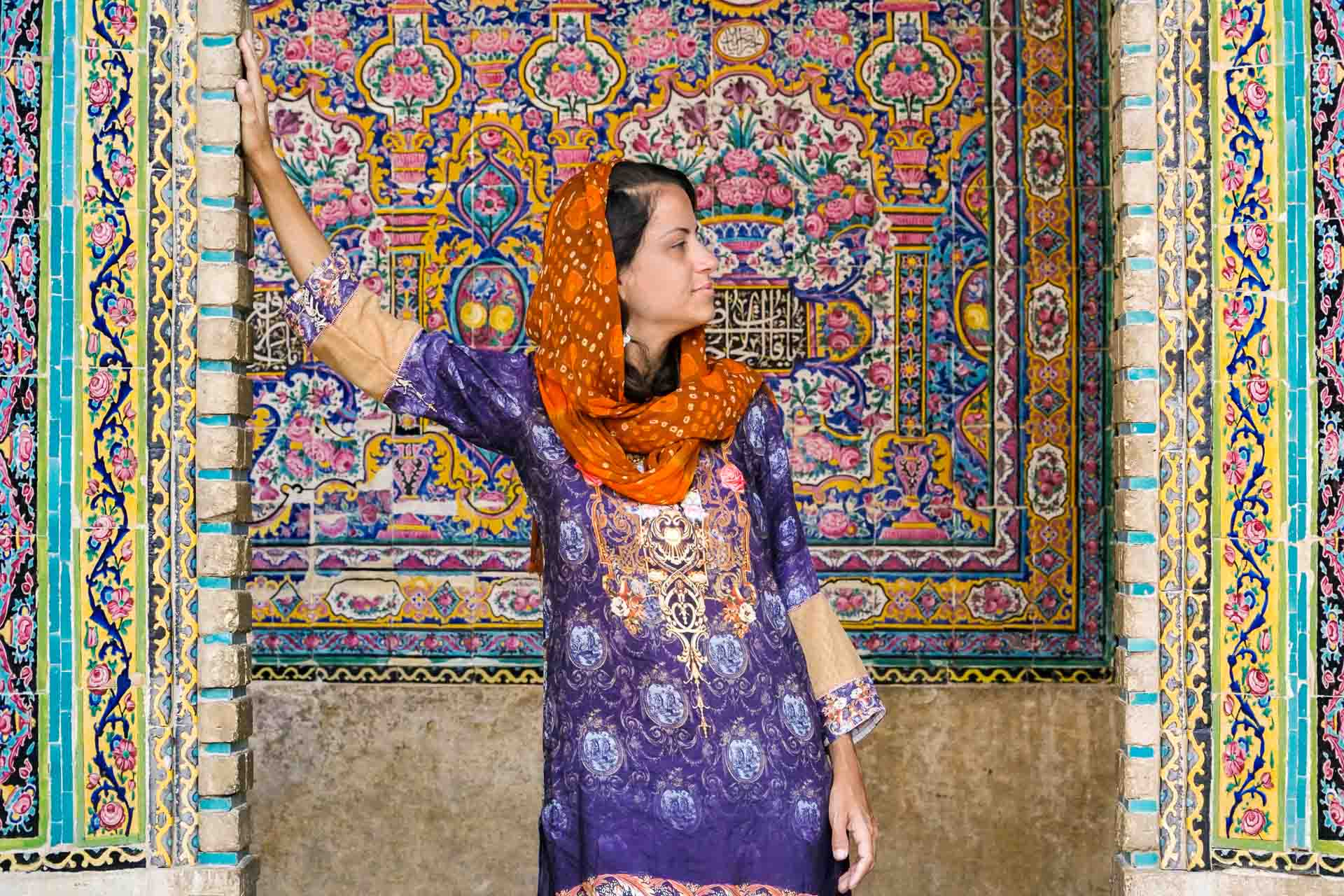
Women dress code in Iran is far more rigorous than for men. Here you goes what you should wear:
- Trouser: cannot either be tight and/or shape your body;
- Blouse: any as long as cleavages don’t show
- Hijab: any kerchief. Fe used a scarf during the first days. We just bought a hijab because it was really hot and Fe was boiling underneath that brown, cotton scarf.
- Manteau: a sort of cape which covers below your arse and can be buttoned in front. It is easy to find anywhere (we paid U$ 7 at the Tehran Central Bazaar). On our arrival at the airport, as Fe didn’t have one, she wore a long jacket.
- Sandals: allowed
- Make-up: free to use it, as long as it is mellow. You will see that Iranian women constantly wear make-up.
Men dress in Iran
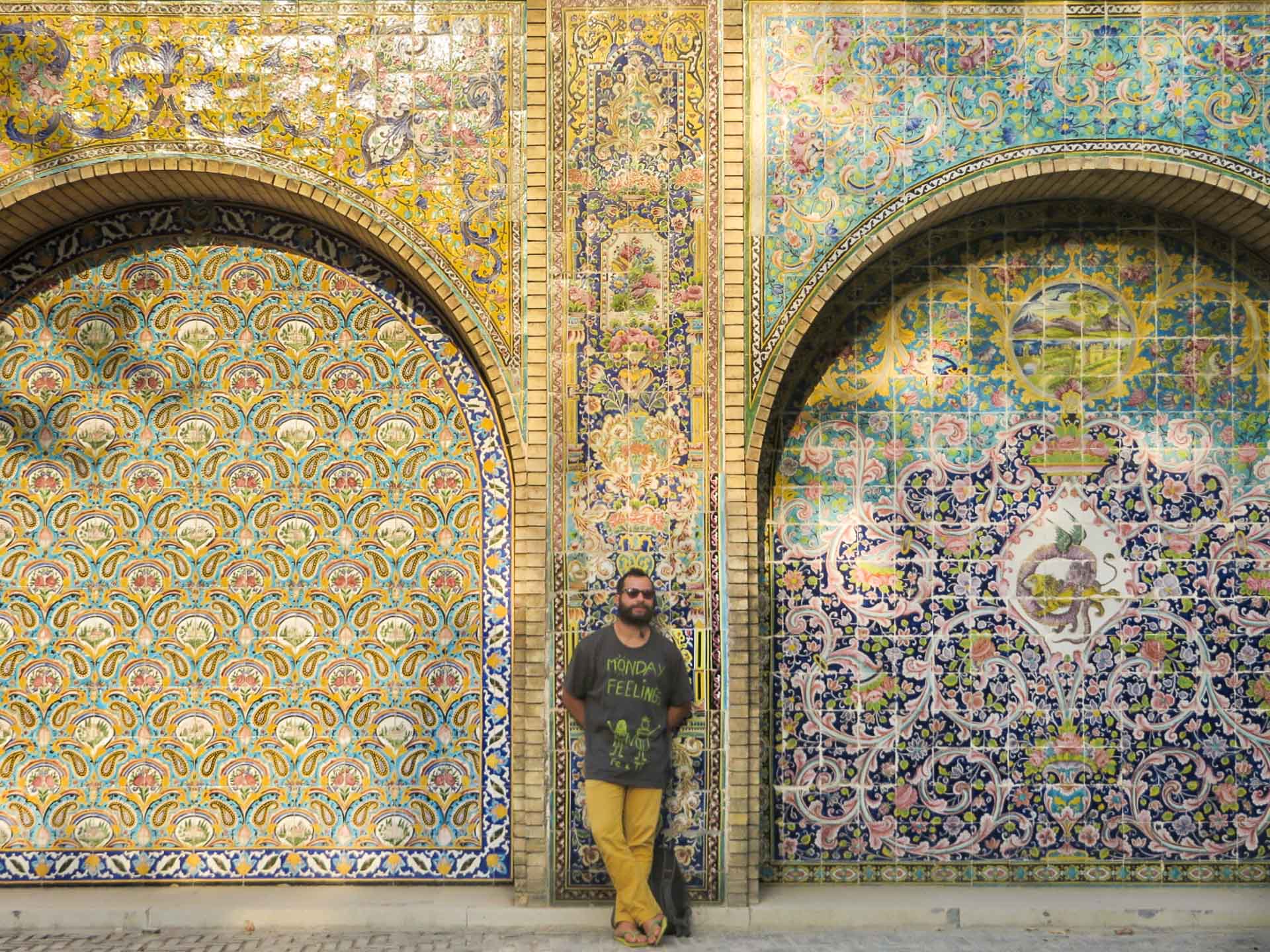
Men should cover their legs up to the shin and wear shirts. Simple, isn’t it? Another one for the male privileges’ list of this world.
If you have tattoos, you had better hide them. We met tattooed Iranians who said they were harassed by the police. As you are a tourist, you will hardly be persecuted, though you are better-off avoiding showing them.
How flexible is the Iranian dress code?
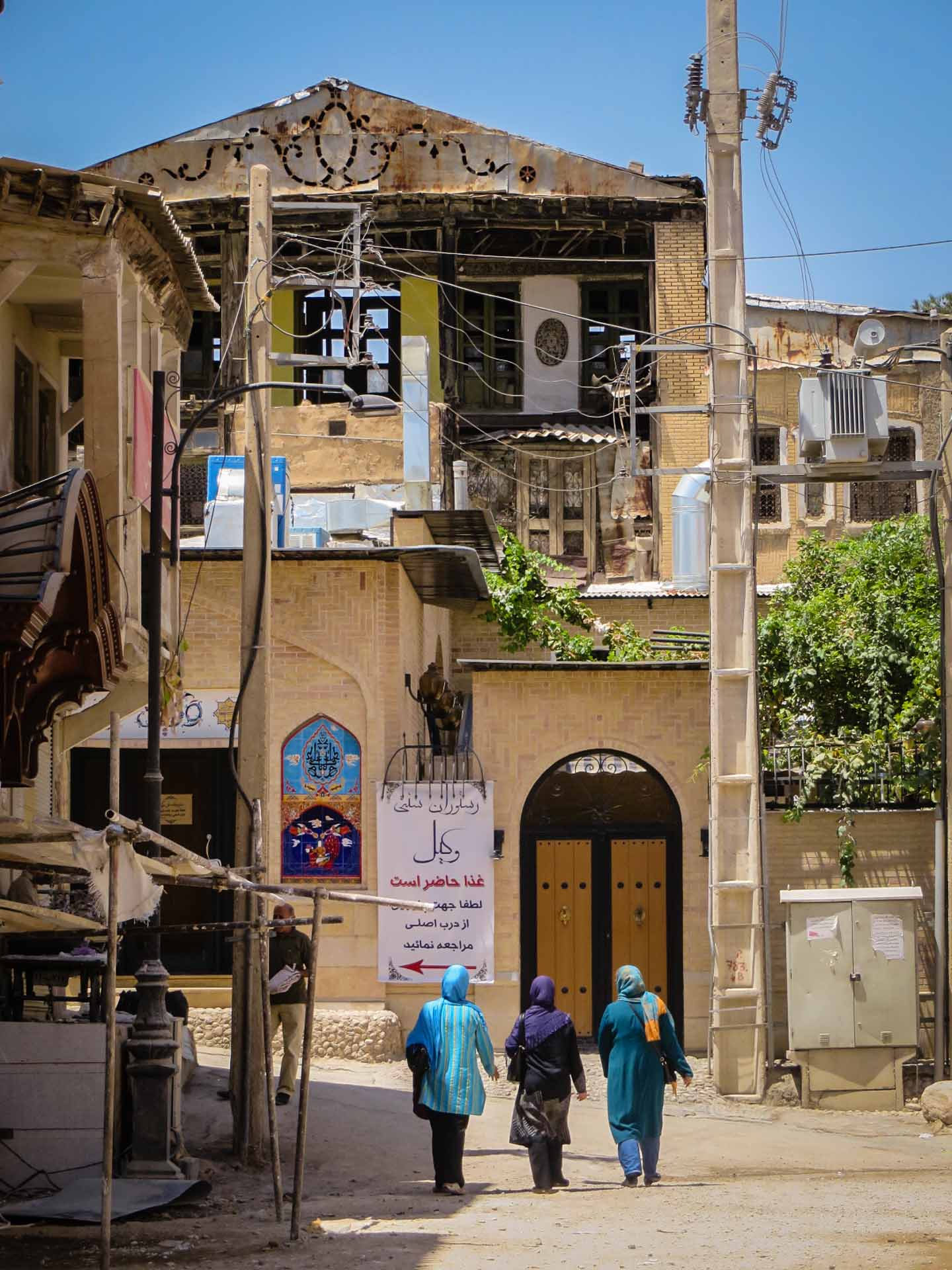
We spent one month in Iran and did not suffer any type of recrimination. But we didn’t dare provoke them either.
In larger cities, such as Tehran, Hameda and Shiraz, there is more tolerance with regards to hijab. However, we heard from some Iranians that they have been taken to the police station in Tehran a few times for having shown their hair more than the necessary.
If you are going through smaller cities, you had better strictly follow the dress code. By the way, if you are planning to visit the most religious cities, such as Qom, don’t even dream about showing a strand of your hair. It’s best to observe what people around you are doing and measure the limit of acceptance of each city and/or situation.
Ah, just remember before judging: at the end, who suffers more about this prohibition in Iran are, unfortunately, the Iranian people. You, as a tourist, will hardly face what they have to face on a daily basis. A great friend of us was always apologising for these rules.
The hijab and how were things in Iran before the Islamic Revolution
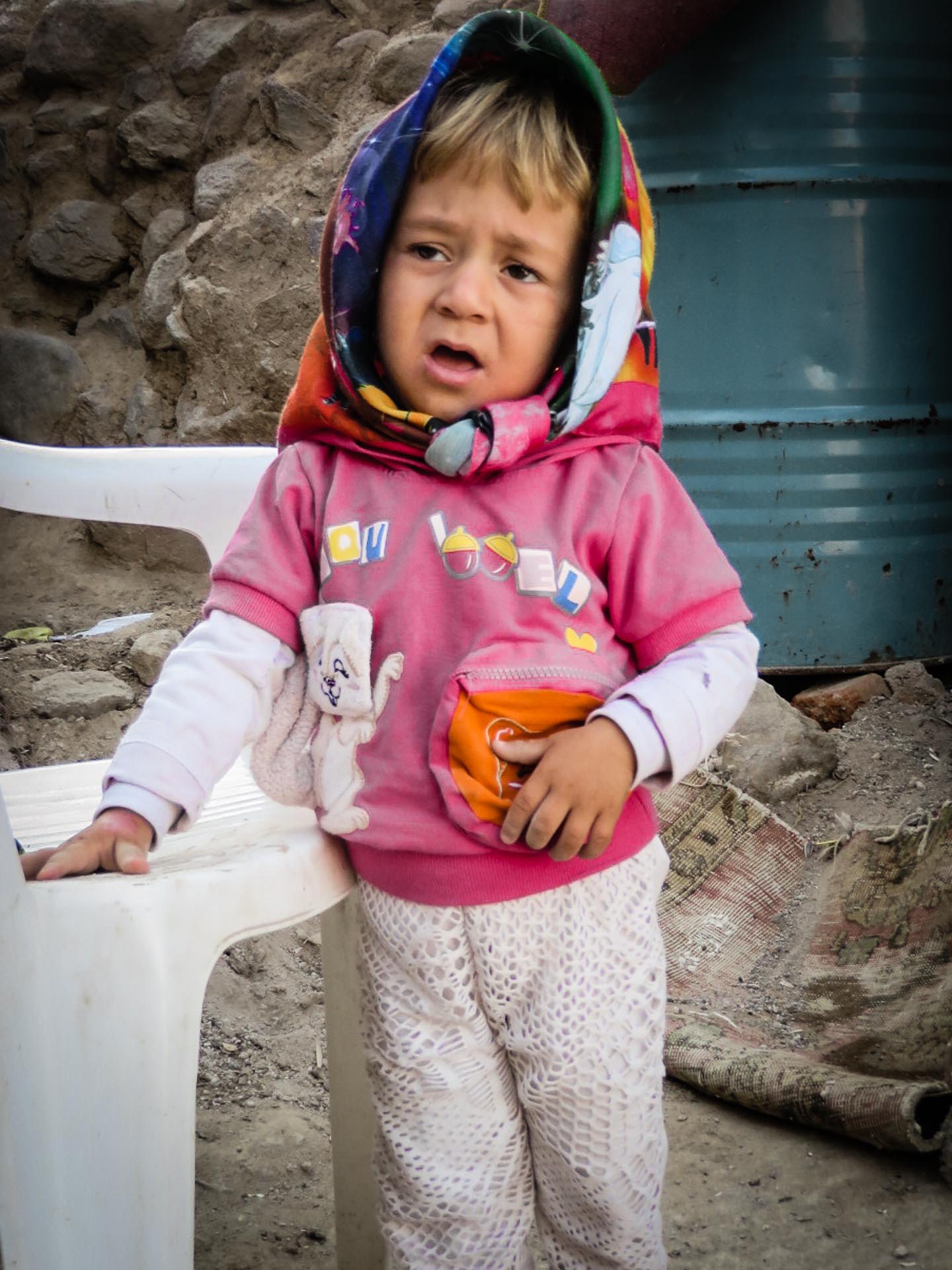
Here is our interpretation after one month travelling to most corners of the country.
The majority of the women are against the compulsory use of veils. We are not saying they are against their usage, but just regarding its obligation. According to the many explanations of our Iranian friends, before the Iranian Revolution of 79, the use of the hijab wasn’t compulsory. This is a personal and a faith question.
After the revolution, the use comes into force and many of the women who disobeyed the law, had their forehead pined in order to hold on the veil. Sad.
Today, pretty much nobody dares defy the Mullahs. However, within their houses the history is completely different. We visited many houses (particularly in Tehran) where none of the women wore the hijab, or just some wore it. And that is the great question: you do whatever you want.
We have seen cases which the mother covers herself, but her daughter doesn’t. Or when some women don’t dare to shake hands with Tiago, but her friends hugged him in front of everybody.
A quite interesting page to understand a bit more about how women feel about it is the Stealthy Freedom, which many Iranian women post photos in their social network challenging their government. A beautiful page of women’s fight for their freedom.
How I felt when obliged to wear the hijab in Iran
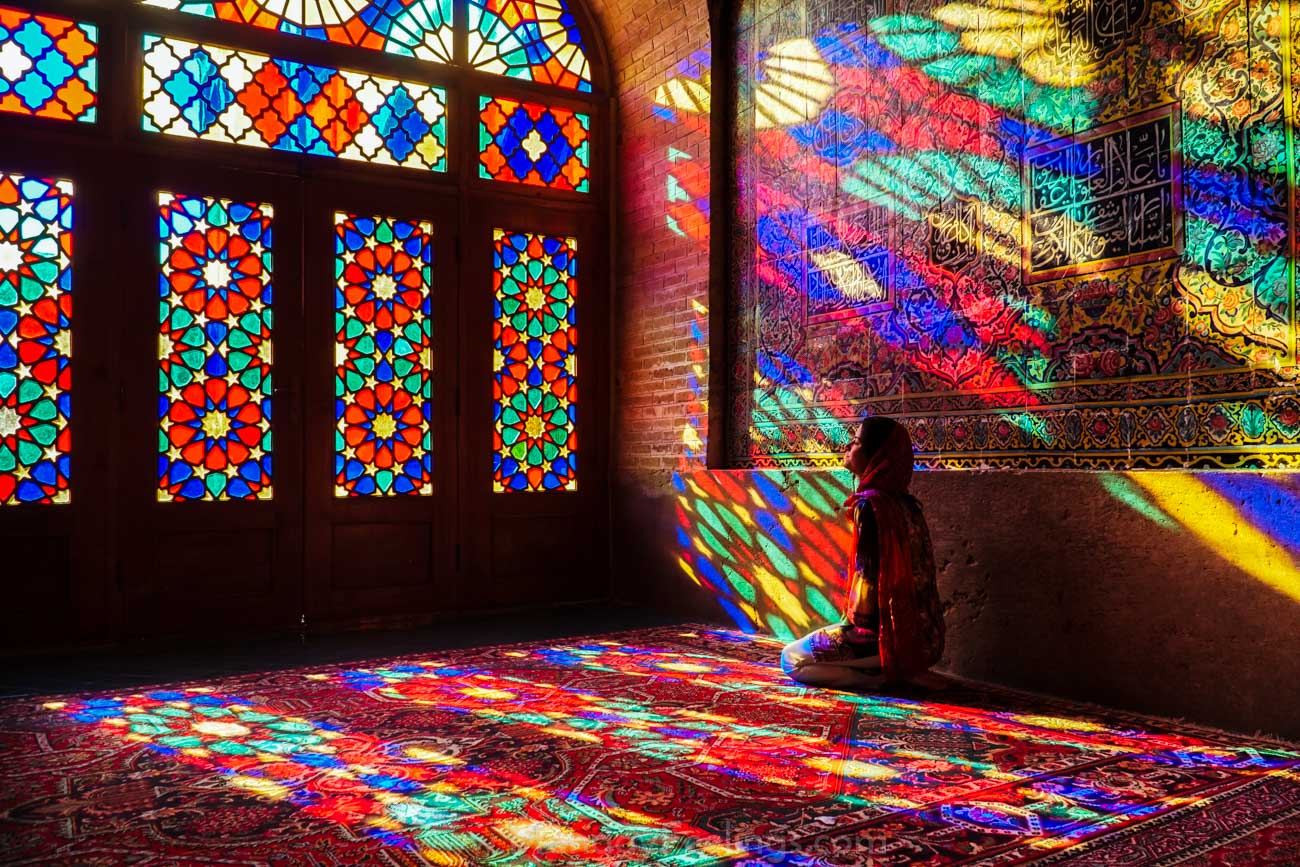
At first, it was interesting, mostly because it was different. Then, it becomes annoying. The problems were: I would constantly forget to put it on; It was way too hot; Or any kind of obligation is a kind of pain, really, isn’t it? The scarf would fall off quite often as well, either with the wind or just with the body’s movement, and there was an obsession of touching my head all the time to ensure it was there.
I felt really sad in realising how much that oppress women. At the end, I was counting the time to get rid of that “tie”.
My worry of having the hijab properly put at all time was such that, even a few weeks after, when we were already in Armenia, I found myself constantly touching my head.
* This How to dress in Iran Article originally written in June 2017 and updated in February 2024.


